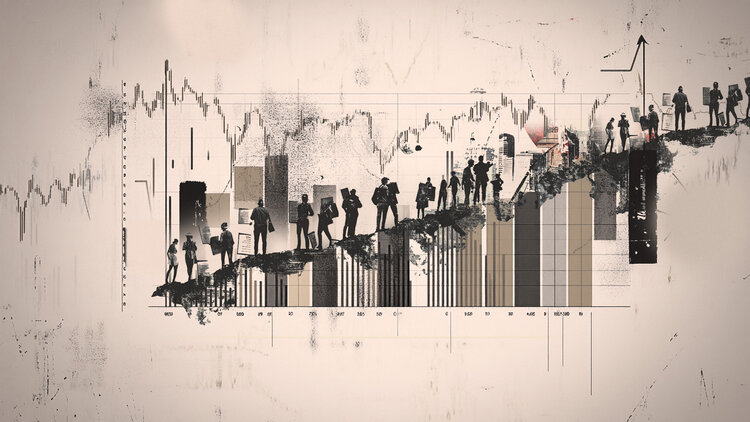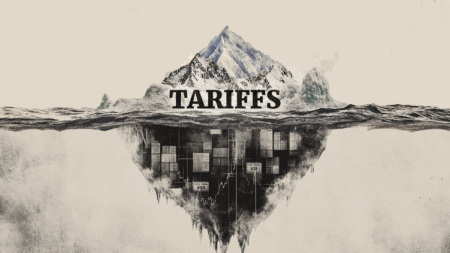- Indian Rupee extends its downside against the US Dollar as the former weakens due to FIIs selling in Indian markets.
- The US-EU tariff deal has strengthened the US Dollar.
- Investors await the Fed policy and a string of US economic data.
The Indian Rupee (INR) posts a fresh four-month high against the US Dollar (USD) on Tuesday. The USD/INR pair slides to near 87.08 as the Indian Rupee continues to face headwinds from the outflow of foreign funds by institutional investors and a decent recovery in the Oil price.
Theoretically, the outflow of a significant amount of foreign funds by portfolio investors diminishes the appeal of currencies from developing economies, such as the Indian Rupee.
On Monday, Foreign Institutional Investors (FIIs) sold equity shares worth Rs. 6,082.47 crores in Indian markets. They have been net sellers in cash equity markets in the last six trading sessions. So far, FIIs have sold Rs. 36,591.13 crores worth of shares in the cash market.
The impact of relentless FIIs selling has also weighed heavily on Indian indices. Nifty50 is down more than 4% from its recent spot levels of 25,669.35. Meanwhile, signs of muted growth in quarterly earnings from India Inc. have also weighed on Indian bourses.
Meanwhile, a recovery move in the Oil price due to the confirmation of a tariff deal between the United States (US) and the European Union (EU) has also weighed on the Indian Rupee. The appeal of currencies from those nations that depend largely on Oil imports to fulfil their energy needs gets diminished if the Oil price rises.
Daily digest market movers: Indian Rupee slumps against US Dollar
- Sheer strength in the US Dollar after the US-EU tariff deal confirmation has also lifted the USD/INR pair. The US Dollar Index (DXY), which tracks the Greenback’s value against six major currencies, extends its upside to near 99.00, the highest level seen in a month.
- Market experts have argued that the US-EU trade agreement favors Washington as it will receive 15% tariffs on imports from Brussels. Investors had priced in a zero-for-zero tariff deal between economies from both sides of the Atlantic. Additionally, the EU has promised to invest $600 billion in the US, in addition to existing expenditures.
- “While the U.S. dollar’s strength may reflect the perception that the new US-EU deal is lopsided in favour of the US, the US Dollar’s strength may also reflect a feeling that the US is re-engaging with the EU and with its major allies, analysts at Macquarie group said, Reuters reported.
- Meanwhile, investors await an array of US economic data, such as the Personal Consumption Expenditure Price Index (PCE) and JOLTS Job Openings data for June, flash Q2 Gross Domestic Product (GDP), and the ISM Manufacturing PMI data for July, this week, and the Federal Reserve’s (Fed) monetary policy announcement on Wednesday.
- In Tuesday’s session, the US JOLTS Job Openings report is expected to show that companies posted 7.55 million fresh jobs in June, slightly lower than 7.77 million in May.
- On Wednesday, the Fed is certain to leave interest rates steady in the range of 4.25%-4.50%. This would be the fifth straight decision by the Fed to hold borrowing rates at their current levels. Investors will closely monitor commentary from Fed Chair Jerome Powell for fresh cues on the monetary policy outlook for the remainder of the year.
Technical Analysis: USD/INR stays above 20-day EMA
The USD/INR pair jumps to near 87.08 at open on Tuesday, the highest level seen in over four months. The pair trades firmly as the 20-day Exponential Moving Average (EMA) slopes higher to near 86.35, indicating a strong uptrend.
The 14-day Relative Strength Index (RSI) oscillates inside the 60.00-80.00 range, suggesting strong bullish momentum
Looking down, the 20-day EMA will act as key support for the major. On the upside, the March 11 high at 87.56 will be a critical hurdle for the pair.
Fed FAQs
Monetary policy in the US is shaped by the Federal Reserve (Fed). The Fed has two mandates: to achieve price stability and foster full employment. Its primary tool to achieve these goals is by adjusting interest rates.
When prices are rising too quickly and inflation is above the Fed’s 2% target, it raises interest rates, increasing borrowing costs throughout the economy. This results in a stronger US Dollar (USD) as it makes the US a more attractive place for international investors to park their money.
When inflation falls below 2% or the Unemployment Rate is too high, the Fed may lower interest rates to encourage borrowing, which weighs on the Greenback.
The Federal Reserve (Fed) holds eight policy meetings a year, where the Federal Open Market Committee (FOMC) assesses economic conditions and makes monetary policy decisions.
The FOMC is attended by twelve Fed officials – the seven members of the Board of Governors, the president of the Federal Reserve Bank of New York, and four of the remaining eleven regional Reserve Bank presidents, who serve one-year terms on a rotating basis.
In extreme situations, the Federal Reserve may resort to a policy named Quantitative Easing (QE). QE is the process by which the Fed substantially increases the flow of credit in a stuck financial system.
It is a non-standard policy measure used during crises or when inflation is extremely low. It was the Fed’s weapon of choice during the Great Financial Crisis in 2008. It involves the Fed printing more Dollars and using them to buy high grade bonds from financial institutions. QE usually weakens the US Dollar.
Quantitative tightening (QT) is the reverse process of QE, whereby the Federal Reserve stops buying bonds from financial institutions and does not reinvest the principal from the bonds it holds maturing, to purchase new bonds. It is usually positive for the value of the US Dollar.
Read the full article here
















